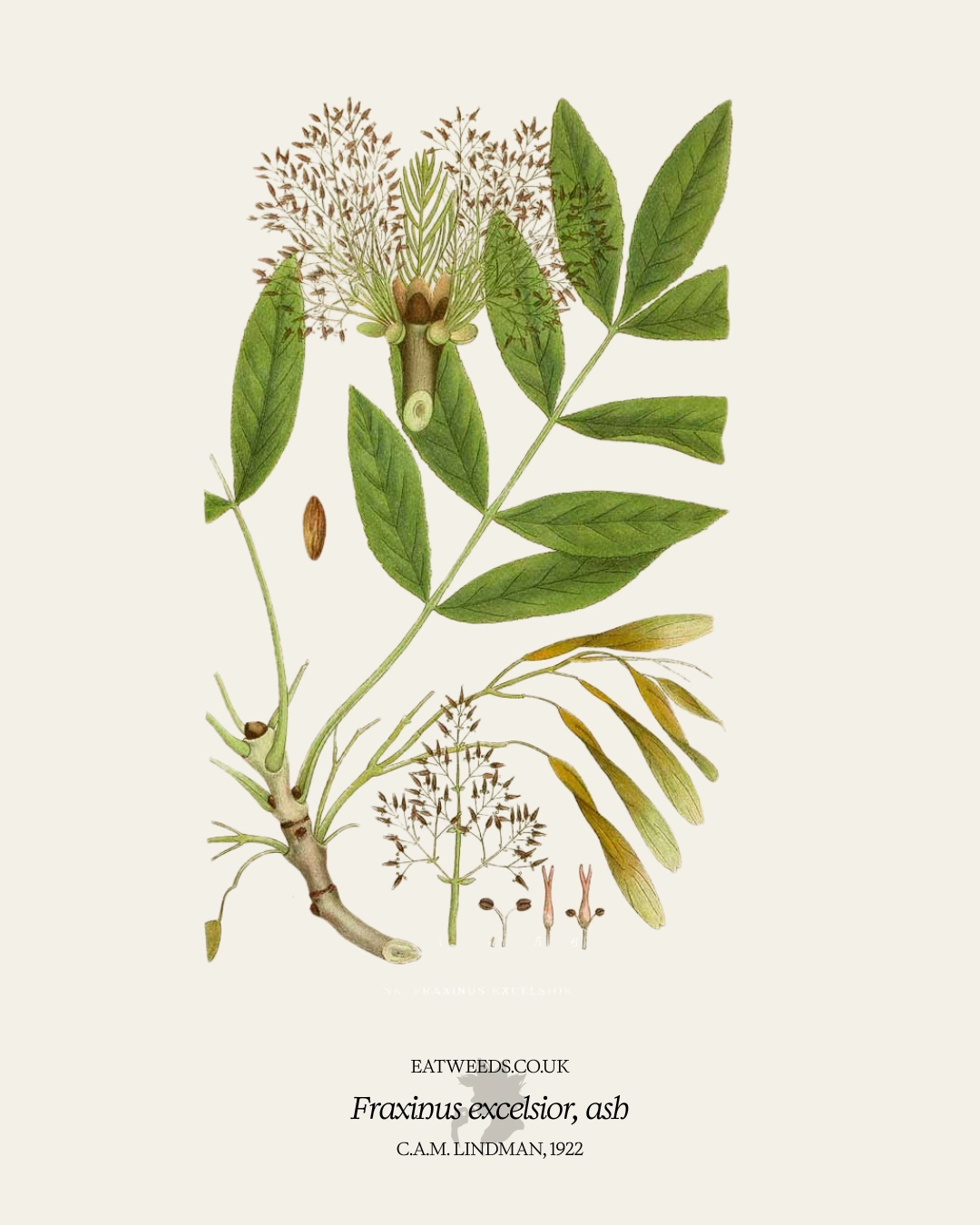Introduction
One of the principal uses of ash (Fraxinus excelsior) has been as a timber tree.
The wood is renowned for its strength and flexibility for building, furniture-making, garden tools, farming equipment, weapons and musical instruments.
Geoffrey Grigson writes that the ash is “immensely useful even in our age of steel and alloy”.
John Evelyn (1620–1706) wrote in his Sylva that the ash is so useful that “every prudent Lord of a Manor should employ one acre of ground with ash to every twenty acres of other land, since in as many years it would be more worth than the land itself”.
In Britain, ash remains one of the most important hardwoods grown by the Forestry Commission.
Our main interest here lies in the ash tree’s story through myth and magic, food and medicine.
The ash is famous in many cultures as a powerful tree of life, death and rebirth.
It was believed that its roots extended as far below the earth as its branches rose to the sky.
The ash is a tree of immense symbolism and meaning, and as such, it has been protected and respected throughout the ages.
The beautiful elegance of the ash tree earned it the title ‘Venus of the forest’, but its familiarity, as Culpeper said, needed no description.
Scientific name
Fraxinus excelsior
Family
Oleaceae
Botanical description
Ash has light grey bark, and large compound leaves divided into four or eight pairs of lance-shaped leaflets with sharply toothed margins. The tree grows up to 40 m. The leaves are preceded by black flower buds bursting into clusters of greenish-white or purplish colours. Each fruit or seed has a single long wing called an ‘ash key’, which aids wind pollination.
Photo identification
Status
Deciduous. Native.
Habitat and distribution
Deciduous woodland, hedgerows, scrub.
Entymology
Parts used for food
Seeds, shoots, leaves and sap.
Harvest time
Spring.
Food uses
The keys (the winged seeds) have been eaten as a pickle in Europe and Asia. The young shoots are edible and can be added raw to salads. The leaves have been used for tea. The tree sap can be tapped to make ash wine.
Recipes
Nutritional profile
It is not noted as having any particular nutritional benefits, although its astringency may explain some of its healing effects in folk medicine. The leaves may have a laxative effect.
Herbal medicine uses
It was once an ancient remedy for snake bites and was believed to cure many ailments, from obesity to leprosy! The tree was also used to treat jaundice, kidney and bladder stones, flatulence, warts, ringworm, and earache.
Other uses
The wood was used to make spears and was excellent for firewood.
Safety note
There is little data that I can find a warning about the side effects of using ash in food and medicine.
Links
- Edible and medicinal wild plants of Britain and Ireland
- Forage in spring
- Forage in summer
- Forage in autumn
References
Allen, D. E. & Hatfield, G. (2004) Medicinal plants in folk tradition: an ethnobotany of Britain & Ireland. Portland: Timber Press.
Cleene, M. de & Lejeune, M. C. (2002) Compendium of symbolic and ritual plants in Europe. Ghent: Man & Culture.
Facciola, S. (1998) Cornucopia II: a source book of edible plants. Vista, CA: Kampong Publications.
Kunkel, G. (1984) Plants for human consumption: an annotated checklist of the edible phanerogams and ferns. Koenigstein: Koeltz Scientific Books.
Grieve, M. M. (1998) A modern herbal. London: Tiger Books International
 Robin Harford
Robin Harford 